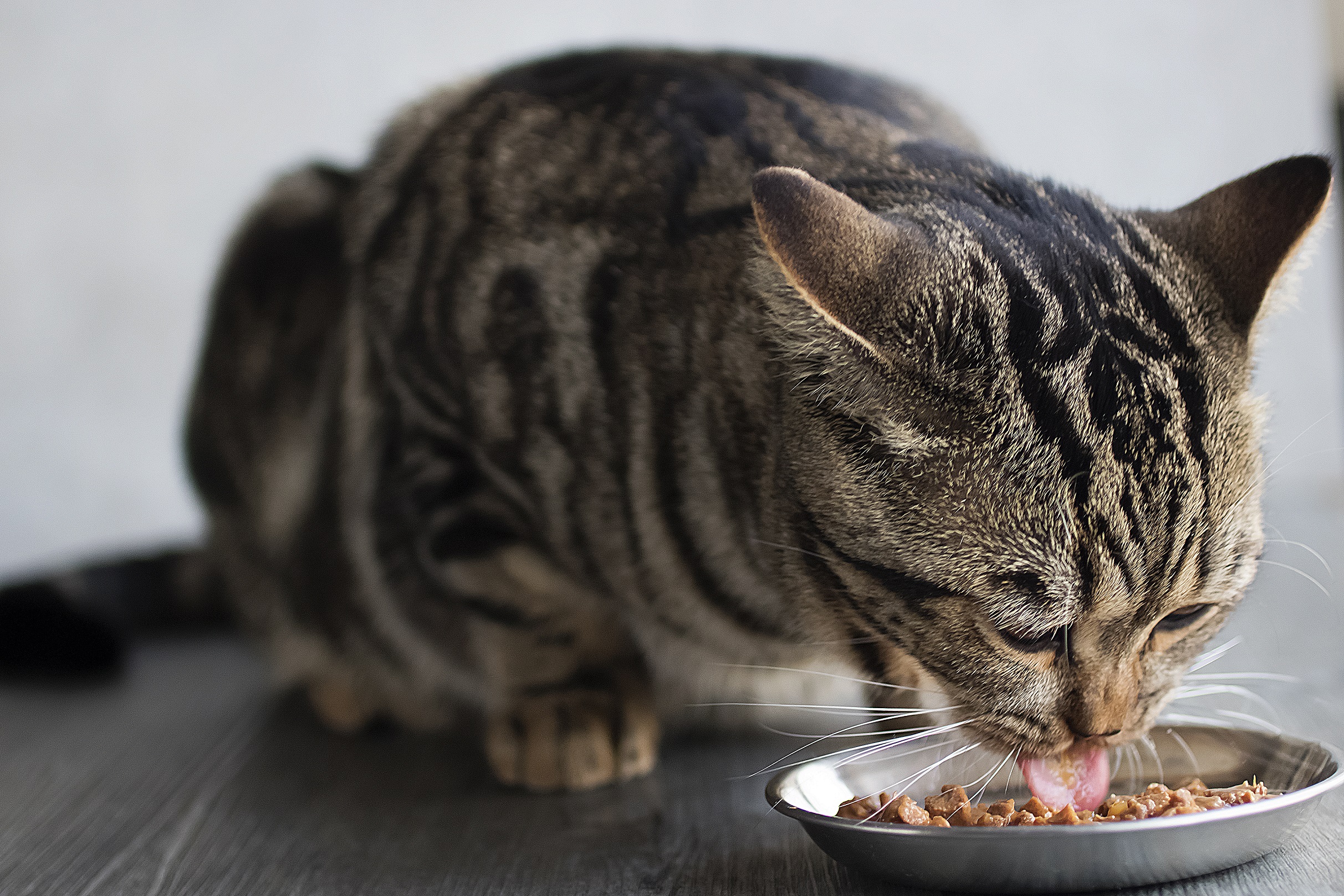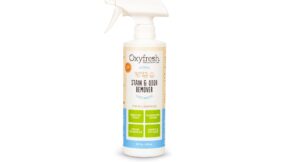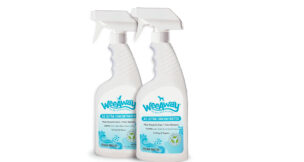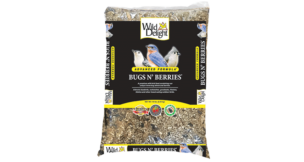Report: U.S. Pet Food Spending Down $2.4B to $34.41B in 2021
Glenn Polyn //October 11, 2022//
After the pandemic turmoil in 2020, there was a strong recovery in 2021. According to John Gibbons, the Pet Business Professor and president of A GPS for Pet Businesses, Total Pet spending had a record increase and reached $99.98 billion, up $16.23 billion (+19.4%).
Food spending fell after the record “panic” increase in 2020 but the other essential segment, Veterinary had record growth. The discretionary segments – Supplies & Services were hit hard by the pandemic.
In 2021, pet parents gave them the attention they deserve… and a lot more. Here are the specifics:
- Pet Food – $34.41 billion; Down $2.44 billion (-6.6%)
- Pets & Supplies – $23.81 billion; Up $8.65 billion (+57.0%)
- Veterinary – $32.67 billion; Up $7.82 billion (+31.5%)
- Pet Services – $9.10 billion; Up $2.20 billion (+32.0%)
The industry truly is a “sum” of its integral segments, and each segment has very specific and often very different buying behavior from the many consumer demographic segments. For this reason, we’re going to analyze each of the industry segments first. This will put the final analysis of Total Pet’s Record Spending into better perspective. Note: The numbers in this report come from or are calculated by using data from the current and past U.S. BLS Consumer Expenditure Surveys. In 2021, this was gathered by the U.S. Census Bureau from over 42,000 interviews and spending diaries. The final data was then compiled and published by the U.S. BLS.
We will start with the largest Segment, Pet Food (and Treats). In 2021, Pet Food Spending totaled $34.41 billion in the U.S., a $2.44 billion (-6.6%) decrease from 2020. The current trend in high priced, super premium foods magnifies the results of any changes in consumer purchasing behavior. In earlier research we discovered a distinct, long-term pattern in Pet Food Spending. In 2018, we broke the pattern due to outside influences – first the FDA warning, then with COVID in 2020. Here is Pet Food Spending since 1997 in full Retail Dollars and adjusted for inflation.
The pattern began in 1997. Retail Pet Food Spending increases for two consecutive years then reaches a plateau year or even drops. There was a notable exception in the period from 2006 to 2010. During this time, there were two traumas which directly impacted the Pet Food Retail market. The first was the Melamine recall, which resulted in radically increased prices as consumers insisted on made in U.S.A. products with all USA ingredients. The second affected everyone – the great Recession in 2009. This was the first time that annual U.S. retail spending had declined since 1956. The net result was that the plateau period was extended to include both 2009 and 2010.
For 20 years, Pet Food was driven by short term trends. A new food trend catches the consumers’ attention and grows … for two years. Then sales plateau or even drop … and move to the next must-have. After 2014, the changes became more pronounced and the situation got more complicated due to a number of factors starting with the move to high priced super premium foods, but including increased competition, especially from the internet, and behavioral changes, like increased value shopping. In 2018, outside influences came into prominence. The first was the FDA warning on Grain Free dog food. This caused many Pet Parents to back away from certain foods. When the warning was determined to be bogus, the Food segment began recovery. Then came COVID. Fear of possible shortages caused certain groups to binge buy food. Now, that’s over. With the spending dip in 2021 after two years of increases, perhaps the spending pattern is back on track. Now, let’s take a closer look at spending since 2014.
First, some specifics behind the $2.44 billion (-6.6%) decrease to $34.41 billion. In 2021, the average U.S. Household spent a total of $258.09 on Pet Food. This was an -7.9% decrease from the $280.38 spent in 2020, which doesn’t exactly “add up” to the -6.6% decrease in total Food Spending. With additional data provided from the US BLS, here is what happened.
- 1.5% more U.S. CUs
- Spent 12.7% less
- 5.5% more often
By the way, if 68% of U.S. CUs are pet parents, then their annual Pet Food Spending is $379.54. Here’s a rolling history.
The year 2014 marked the beginning of the Super Premium era. It began in the second half of 2014 with the 25>34-year-old Millennials making the first move. In 2015, the Baby Boomers got on board in a big way, producing a $5.42 billion increase in spending, the biggest lift in history at the time. 2016 saw a spending change that was accelerated by the high prices of Super Premium Pet Foods. After consumers upgraded to a more expensive pet food, their No. 1 priority became, “Where can I buy it for less?” Value Shopping on the internet was a major contributing factor in the big spending drop in 2016.
The year 2017 was an up year which should have been due to a must-have trend. However, a closer look at the data showed that the $4 billion increase in Pet Food spending in 2017 came not from a new trend but from a deeper demographic penetration of Super Premium foods. Value shopping in a highly competitive market, especially on the internet had made Super Premium pet foods more accessible to a broad swath of consumers.
Like Pet Food, human behavior has changed over the years in regard to our pets. In the 1990s, pet owners became pet parents. Then, after 2000, we began truly humanizing our pets which is very accurately reflected in the evolution of Pet Food. We became more focused on fulfilling the health needs of our pets, beginning with the first move to premium foods in 2004. This radically increased after the Melamine scare in 2007. Now consumers read pet food labels, research ingredients and expect their pet foods to meet the same quality standards as the best human foods. This was very evident in 2018. It should have been a year of increased spending but the consumers’ reaction to the FDA grain-free warning threw the pattern out the window. In 2019, the warning lost credibility. Pet Food spending stabilized in the first half of the year and then grew by $2.3 billion in the second half. Some pet parents began to return to the topline Super Premium Foods while others opted for even more expensive varieties. Also, new groups got on board the Super Premium Express.
After the 2019 recovery came the pandemic of 2020. There is nothing more necessary to a Pet Parent than pet food. This spurred binge buying, especially in the first half of the year and drove the biggest annual spending increase in history. However, binge buying doesn’t increase usage, so spending has fallen in 2021. Another factor was the ongoing strong search for value and convenience which drove many consumers online. Consumers spent less per purchase which reflects the end of the binge as well as their search for value. There were 1.5% more CUs and they bought more frequently. The increase in frequency came from more regularly scheduled deliveries but some pet parents also downsized their purchases to lower the price. When you put all these factors together, the small drop in spending is not a surprise.
The growth of Pet Food spending since 2014 reflects the rise of Super Premium but also another trend – the spectacular increase in the number and use of Pet Medications and Supplements, which are often produced in the form of treats. Together, the strength of Pet Food and these product subcategories reflect the Pet Parents’ absolute number 1 current Concern – the health, well-being and safety of their Pet Children, which starts with the quality of their food.
Now let’s look at some specific 2021 Pet Food Spending Demographics. First, we’ll look at income. Prior to 2014, it was a less dominant factor in Food spending. However, the move to Super Premium has brought it more to the forefront. In 2015 the spending of the over $70K group exceeded the <$70K for the first time. In 2021, $70K> had a big drop in spending but was still 71% more than <$70K. The $100>150K had the biggest decrease while <$30K, $70>100K and $150K> actually spent more. Due to the recent movement to higher income groups, we now also report spending over/under $100K. In 2015, the 50/50 divide on Pet Food spending was about $70K. In 2019 it was $87K. In 2020 it was about $107K, breaking the $100K barrier for the first time. In 2021 it fell to $92K, about 5% more than the average CU income but 30% more than the median income. Higher income is still important in Pet Food spending. The chart below shows the annual spending for the major income groups from 2016 > 2021. This should put the 2021 numbers into better perspective.
Before we get into the details for 2021, we should note the uniqueness of 2017. With competitive pricing on Super Premium Foods and the consumers’ commitment to pet health, 2017 was the only year since 2015 with spending growth in every major income group. Since then, we have seen the major impact on various groups by outside influences. In mid-2018, it was the FDA grain free warning and in 2020 it was the pandemic.
2021 National Numbers: $258.09 per CU (-7.9%); $34.41 billion; Down $2.44 billion (-6.6%); 2016>2021 – Up $7.91 billion (+29.8%)
The spending pattern was mixed. The spending by the <$70K groups was stable. There was a huge drop by the 2020 binge buying $100>150K group which was somewhat mitigated by lifts from $70>100K & $150K> groups.
Here are 2021 specifics:
- Under $30K: (25.5% of CU’s) – $142.61 per CU (-3.0%) – $4.67 billion – Up $0.06 billion (+1.3%). Obviously, this group is very price sensitive. It was also strongly impacted by the pandemic. The number of CU’s was up 4.2% in 2021 after steadily declining for years. In 2020, CUs were down 18.8% from 2015. They don’t have a lot of $ to spend but they did do some binge buying in 2020. Their spending lift in 2021 was entirely due to more CUs. They are still fully committed to their Pets. This is evidenced by the fact that they spend 1.02% of their Total CU expenditures on their pets, including 0.43% on Pet Food. The national averages are: Total: 1.12%; Food: 0.39%.
- $30K>$70K: (29.7% of CU’s) – $194.37 per CU (+0.2%) – $8.03 billion – Down $0.14 billion (-1.7%). They are also very price sensitive and 2021 didn’t make things any better. Their average income was unchanged from 2020 to 2021 while the national average increased by 3.7%. They had a 1.9% decrease in the number of CUs which negated their slight increase in CU spending. The Pet Food spending within this big group was definitely mixed. The $30>39K group lost 7% in CUs and radically decreased spending, -$1.0B (-33.3%). The $40>49K group fell -4.5% in numbers but they increased their CU spending by 2.8%. However, their spending still fell by -$0.04B. Now, the most positive group, $50>69K. They gained 3.5% in CUs but spent 25.5% more per CU on Pet Food. These 2 factors pushed their Total Pet Food Spending up $0.90B (+30.0%). It was a big lift but not enough to overcome the decreases from $30>49K.
- $70K>$99K: (14.8% of CU’s) – $313.68 per CU (+54.4%) – $6.21 billion – Up $2.45 billion (+65.4%). This group has a regular up/down spending pattern. They got “on board” with Super Premium food in 2017 but they became very sensitive to outside influences – the FDA warning in 2018 and COVID in 2020. However, they came back strong from both. They are middle income, with family responsibilities and under considerable monetary pressure.
- $100>150K (14.2% of CU’s) – $289.71 per CU (-62.0%) – $5.46 billion – Down $8.92 billion (-62.1%). This group was the driver in the 2020 panic, binge buying of Food in 2020. It was an emotional reaction, but they had the $ to do it. They are “eating down” the excess inventory as the 2021 drop was $1.7B more than the 2020 lift. However, they are still spending the money “saved” on Food on their pets, with a 36+% spending lift in all other industry segments.
- $150K> (15.8% of CU’s) – $485.93 per CU (+68.6%) – $10.05 billion – Up $4.12 billion (+69.5%). This group shows that there were strong pandemic recoveries for some groups as their Pet Food CU spending grew by 68.6%. They also illustrate the growing importance of income in Pet Spending – the higher the better. They had by far the biggest increase in Pet Food spending but they also were responsible for 87% of the $16.2 billion increase in Total Pet spending.
The 2020 pandemic had a slightly positive impact on the <$70K income groups. However, except for the binge buying by the $100>150K group, it was negative for higher incomes. 2021 spending was down because there was not a repeat in the binge but all groups but <$40K & $100>150K spent more per CU on Pet Food in 2021. In fact, the $70>100K & $150K> groups combined to spend $6.6 billion more on Pet Food in 2021 than in 2020. We should also note that Pet Food spending is up $3.22B from pre-pandemic 2019, +10.3%, a growth rate of 5.0%, which is close to the 5.3% from 2014>19.
Now, Spending by Age Group.
2021 National Numbers: $258.09 per CU (-7.9%); $34.41 billion; Down $2.44 billion (-6.6%); 2016>2021 – Up $7.91 billion (+29.8%)
The overall assessment appears simple. The 55>64 yr-old, young Boomers spent less, while all other groups spent more.
- 55>64 (18.5% of CU’s) – $275.79 per CU (-52.7%) – $6.75 billion – Down $7.89 billion (-53.9%). This group (all Baby Boomers) has been at the forefront of recent major spending swings. In 2015 they upgraded to Super Premium. In 2016 they shopped for a better price. In 2017, they led a deeper penetration of the upgrade. In 2018 they had a -$3.5 billion reaction to the FDA warning. They began to recover in 2019 but then came 2020, which saw a huge lift in spending. There were three major contributing factors. First was panic, binge buying due to pandemic. They also were still recovering from the FDA warning. Finally, the pandemic caused the loss of over 2 million <25 CUs. Many of them moved back with their parents bringing their pets with them. That brought us to 2021. There was no repeat of the panic buy and they “ate up” some of the extra stock. Many of their kids moved out again. Together this caused a big drop in spending.
- 45>54 (16.7% of CU’s) – $292.68 per CU (+18.3%) – $6.58 billion – Up $1.12 billion (+20.6%). This group is No. 1 in income and total CU expenditures. Up until 2015 they were No. 1 in Pet Food spending. They bought premium food but didn’t “buy in” to Super Premium until 2017. They were negatively impacted by the FDA warning, but they rebounded stronger than any other group. In 2020, their spending dropped significantly. Although some may have dialed back their purchases. It is likely that most found value and cheaper prices by buying on the internet. In 2021, they opted for even more expensive food, spending 24% more per purchase which produced a 20.6% increase in spending.
- 65>74 (16.1% of CU’s) – $291.80 per CU (+17.5%) – $6.13 billion – Up $0.93 billion (+17.8%). This group is now all Baby Boomers and growing. They are Boomers so their Pets are a major priority. They spend 1.27% of their total CU expenditures on their pets, the highest percentage of any group. They are also the only group to spend more on Food every year since 2016. They are starting to retire but many are still working (0.6 per CU). Their income was up 5.4% vs 2020, compared to a national increase of 3.7%. They obviously spent some of the extra money on their pets.
- 35<44 (17.2% of CU’s) – $249.89 per CU (+27.9%) – $5.62 billion – Up +$1.24 billion (+28.3%). They are primarily young Gen Xers. They are second in income and CU spending but have the biggest families. Their spending pattern matches the older Gen Xers but is usually less volatile. They spent 17.9% more 8.5% more often for the 2nd biggest increase in spending.
- 25>34 (15.7% of CU’s) – $225.51 per CU (+1.3%) – $4.91 billion – Up +$0.12 billion (+2.6%). In recent years the spending pattern of these Millennials has foreshadowed the overall market for the following year. In pandemic 2020, they spent 22.3% more but just essentially held their ground in 2021. They spent 12.9% more, 10.2% less often.
- 75> (10.9% of CU’s) – $261.20 per CU (+85.3%) – $3.76 billion – Up +$1.76 billion (+88.3%). Both the effort and the expense of Pet Parenting become issues as we reach 75+. However, they remain committed to their Pets. They got fully on board with Super Premium Pet Food in 2021. They spent 87.8% more per purchase, 1.2% less often.
- <25 (4.9% of CU’s) – $98.30 per CU (+31.6%) – $0.66 billion – Up +$0.27 billion (+68.2%). Many of this group that had moved back in with their parents, left home again. This is apparent as 27.8% more CUs bought Pet Food 47.3% more often.
In 2020 the 55>64-year-old Boomers binge bought Pet Food. As a result, in 2021 they had a big drop in spending, which was the only decrease by any age group. The Pandemic caused more Pet Parents to focus on the health & wellbeing of their Pet Children. The result is that there is an even broader commitment to high quality, Super Premium Pet Food.
We going to drill deeper, but a little differently than we normally do. The pandemic had a major impact on Pet Food, with the 2020 binge buying by some groups followed by an inevitable big drop in 2021. We have noted that despite the decrease in 2021 spending, the average growth rate from 2019>21 was 5.0%, just about equal to the 5.3% rate from 2014>2019. We will identify the segments with the biggest change from pre-pandemic 2019 to post-pandemic 2021.
The first thing that you notice is that the biggest increases are radically larger than the biggest decreases. That’s always a good indication of progress. Also, we should note that whether you rent or own your home, you spent more on Pet Food after the pandemic than you did before.
About half of the winners are the “usual suspects”:
- Advanced College Degree
- West
- White, Not Hispanic
- $200K> Income
- Two People
- Homeowners w/Mtge
However, some are surprises:
- Retired
- Center City
- No Earner, 2+ CUs
- 75+ years old
These winners indicate another impact of the pandemic. We focused on home and family, including our Pet Children. Our #1 pet concern became their health and well-being. Even low-income groups committed to high quality pet food.
Among the “losers,” you see some of the groups that binge bought Pet Food in 2020 in fear that it might become unavailable:
- Self-Employed
- Married, Child 18>
- $100>149K
- 55>64
- Boomers
Each of these groups increased 2020 Pet Food Spending by an average of $7.7 billion, +118% over 2019. Panic, Binge buying of Pet Food doesn’t get repeated and it doesn’t increase usage. It only increases your backup stock. When you think of the situation, it’s amazing that they got back to a spending level in 2021 relatively close to that of 2019.
The pandemic was a traumatic event for everyone. However, the Pet Food segment has essentially returned to the strong growth rate that it’s had since 2014. Now, we just need a hot new trend to further “fuel the growth fire”.






 (click to enlarge)
(click to enlarge) (click to enlarge)
(click to enlarge) (click to enlarge)
(click to enlarge) (click to enlarge)
(click to enlarge) (click to enlarge)
(click to enlarge)












